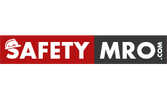Products under these brand are currently under testing and confirmation by the manufacturer for California Prop 65 compliance.
If you are shipping to the State of California, please contact our customer service @800-310-7233
- Sellstrom/Surewerx
- Steel Grip
- Ossur North America
- Honeywell Safety
- ERB Safety
- Draeger
- L.P. Royer
- 3M
- MSA
- Bullard
Prop 65:
It was in 1986 when California voted in favor of an initiative called, Safe Drinking Water and Toxic Enforcement Act of 1986, or more popularly known by its original name, Proposition 65. This aims to address the growing concerns related to people’s exposure to toxic chemicals. The initiative requires the State to publish a list of chemicals that were known to cause cancer, birth defects, or similar reproductive harm. Since it’s implementation, about 800 chemicals have been included in the list, which was updated at least once a year.
Businesses are mandated to notify Californians of any substantial amounts of chemicals in the products that they acquire in their homes or workplaces. This also includes those that are released into the environment. This information enables Californians to make informed decisions about protecting themselves from exposure to these chemicals. Proposition 65 also prohibits California businesses from knowingly discharging significant amounts of listed chemicals into sources of drinking water.
The Office of Environmental Health Hazard Assessment (OEHHA) administers the Proposition 65 program and evaluates all currently available scientific information on substances considered to be included on the Proposition 65 list.
What are included?
The chemicals listed include, additives or ingredients in food, drugs, common household products, pesticides, solvents, or dyes. The list also includes chemicals that are used in construction, manufacturing, as wells as the byproducts of both.
How is a chemical added?
Adding to the list can be done in 4 ways;
Any chemical that is found to cause cancer, birth defects, or reproductive harm by either of the two independent committees can be listed. These committees are the Developmental and Reproductive Toxicant (DART) Identification Committee and the Carcinogen Identification Committee (CIC). The members of these two committees are appointed by the Governor and will serve as the “State’s Qualified experts who will be responsible for evaluating the chemicals under Prop 65.
A second way is through the evaluation of any organization designated as an “authoritative body” by the DART or CIC. These include the U.S. Environmental Protection Agency (EPA), National Institute for Occupational Safety and Health (NIOSH), U.S. Food and Drug Administration (U.S. FDA), National Toxicology Program, and International Agency for Research on Cancer
A third way is if the federal government or an agency of the state requires a chemical to be listed under Prop 65. These are mostly prescription drugs mandated by the US FDA to have warning labels relating to cancer, birth defects, or reproductive harm.
A fourth way involves the listing of chemicals meeting certain scientific criteria and identified in the California Labor Code as causing cancer or birth defects or other reproductive harm. This method established the initial chemical list following voter approval of Proposition 65 in 1986 and continues to be used as a basis for listing as appropriate.
Requirements for Businesses/Companies
Prop 65 requires companies and businesses with more than 10 employees to let people know clearly and visibly that they will be exposed to any listed substance or chemical. These include labels, posters, and also print media.
Companies that do business in California are also prohibited from discharging listed chemicals into drinking water sources. Once a chemical is listed, companies/businesses are given 20 months to comply.
Warnings
Using the Prop 65 list, businesses can determine whether they would need to provide warning levels or not. OEHHA has set “Safe Harbor” levels from the warning requirements and prohibitions if chemical exposure is deemed below these levels.
In case there is no safe harbor set, the warning levels and prohibitions will be in effect. That is, unless the levels of exposure to the chemical or substance can be proven to be within acceptable limits.
